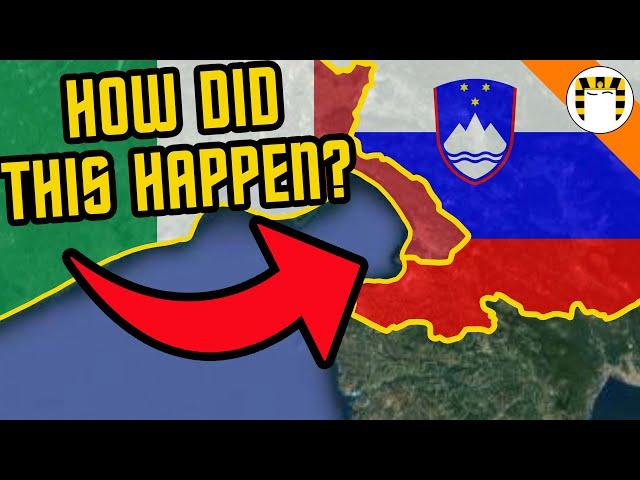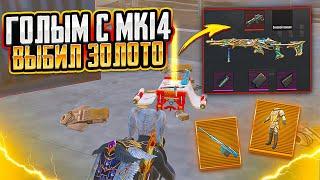Комментарии:

So Italy was in an invading mindset( with Adolf) and got bitchslapt.?
Ответить
In my opinion the video title is misleading, because it actually was the other way round: it was Slovenia who got the Italian coastline of Istria after the WWII (Italy was defeated), with the exception of Trieste and Muggia, which remained in Italy.
Ответить
Story of Germany? How come, they were not involved? German speaking. Yes. Germany, I highly doubt so. They were busy somewhere else.
Ответить
Istria is ITALY!!!
Ответить
Italy didn't get slovenian coastline, Slovenia and Croatia got a considerable chunk of Italian hinterland.
Ответить
The creation of The Free State of Fiume after the collapse of D'Annunzio's Regency of Carnaro provided some extremely interesting border shenanigans. The League of Nations, Italy, and The Kingdom of Yugoslavia all agreed that Carnaro should be dissolved and its territory re-appointed, but in a strange game of strictly overt diplomatic rapprochment and a millennia long messy history of border redrawings, all the involved parties tried to palm off different sectors of control onto each other, desperately feigning cooperation by throwing poisoned chalices at each other whilst clinging onto parcels of controlled land that became increasingly muddled and divided.
As such, Fiume (Rijeka) became a bizzare game of border hopscotch. National borders would change within the space of hours, cycling through the participating nations in a seemingly random fashion. Residents would go to work in the morning and come home to find a hastily unrolled bale of barbed wire running down the street and their house now in a different country. Exclaves and enclaves would bloom, burst, wither, and disappear depending on how many people were spotted within a given street, or building, or public square at the time of official observations. Long, rambling, crooked isthmuses and panhandles of borders would snake so chaotically through the streets that border checkpoints were set up in churches, homes, offices, etc, because the building's front and back doors were the only place where the borders met in a way that could be crossed by foot traffic. Roads and railways became split over two territories, or made into single nation corridors, meaning train passengers had to alight from one side of the carriage or the other to avoid illegally crossing a border, and omnibusses had to perform U-turns in the street to make sure their passenger could leave the bus on the 'correct' side of the border. A simple journey on foot across Fiume could warrant up to half a dozen border crossings, some of which were manned by officials from far distant countries such as Britain, France, and the US. Shipments of goods sometimes had to go through multiple customs clearances to travel 100yds inland, only to end up right back in the same territory they originally landed in.
In 1924 the Italians and the Yugoslavians signed The Treaty of Rome which awarded Fiume (Rijeka) to Italy, and its sister city of Sušak to Yugoslavia, but for that brief period between D'Annunzio's failed corporatist experiment, and the ratification of The Treaty of Rome, life in Fiume and its surroundings was certainly a confusing and Kafkaesque kind of existence.

How Slovenia got Italy's coastline*
Ответить
"No-no German" 😢
Ответить
There are very few ideas that have caused as much trouble in Europe as modern age nationalism. Especially in central and eastern Europe and in the balkans, the idea is extremely ill-suited to the way people of different ethnicities, languages, and religions are living in mixed settlements. Thankfully, today we have the European Union and borders have lost their character as obstacles to trade and exchanges.
However, history remains an obstacle in communication, and sadly the current Italian authorities have turned down the combined efforts of Italian and Slovenian historians to reach a common and agreed account of what happened in the last century. In the Italian mainstream, a narrative prevails which sees Italians as victims of Slavic aggression, completely glossing over what happened during the Italian occupation, and exaggerating and misinterpreting the history of the so called “foibe”.
To overcome nationalism and its grasp of people’s minds, the first step is recognising your own country’s wrongdoings, and own up to them. Nationalistic propaganda thrives on taking the victim role, and it is especially true of the right wing parties, since people who are frustrated love to have an aim for the aggression that stems from frustration. Show them a supposed enemy, and they’ll take it and follow you in a crusade.
It is an extremely dangerous stratagem in Europe, even if I wouldn’t go as far as expecting Italy to go to war against a neighbour today. But it is bad enough to antagonise them. The best way of entertaining good neighbours relationships is to think what you might be doing wrong yourself, and the Italian wailing about the supposed massacres of Italians - which objectively pale in comparison to other episodes of the Balkan war theatre, where Italians were among the perpetrators - is precisely the opposite. (And if you’re Italian and thinking about answering me - sono tedesco, sposato con un’italiana, e tutto quello che so sulle foibe l’ho letto su libri italiani, sentito da storici italiani che hanno studiato la materia e partecipato nella commissione Italo-slovena di storici, e i libri li ho comprati proprio a Trieste.)

I believe, and you can correct me on this, that the Karst plateau is the origin of the term Karst that has been applied to similar areas around the world.
Ответить
Someone call GeoWizard and see if he wants to walk across this part of Italy in a completely straight line
Ответить
Many buildings in Trieste in the center and next to the church (which is mentioned in the video) were built by Serbian merchants (Gopčević palace, Kurtović, Vukasović, Riznić, Todorović, Vučetić, Kvekić, Vidaković, ect.). Apart from 60 palaces, church and school and valuable treasury and library, the Serbs in Trieste also have their own cemetery, which is protected as a cultural and historical monument of Italy.
Ответить
Good video about an area of Italy that not many people know about if they are not from Italy itself or Slovenia. Indeed, Trieste holds a unique place in European history, both in terms of centuries ago and mere decades ago: what happened to it between 1945 and 1954 still constitutes a rather sensitive subject for some Italians. What is not mentioned is that it is a quite important city for Italy as a whole — it is the capital city of the Italian north-eastern region of Friuli-Venezia-Giulia and it has a quite strong economy, based on industries and businesses that have thrived there for centuries, such as shipbuilding, port activities and (guess why) insurances (typically a business that is linked to the city’s naval history). Sadly, not a lot of Italian themselves visit Trieste, exactly because of the geographical location you mentioned at the start of the video: one really needs to “want to go there”, as it is in no way a transit city for any other destinations in the country (it is an obvious privileged transit point if you’re heading to Slovenia or Croatia of course, though).
Ответить
i was beginning to think none of the history/geography channels i follow were ever going to talk about the important history of my city, also never thought it would be done in such a well done video
Ответить
TLDR: It was never Slovenia's coastline
Ответить
At the end of the day Trieste is irrelevant as the small town of Koper has the best port in the entire Adriatic sea 🗿
Ответить
Chile and Croatia: hey I get this one
Ответить
It should be all Croatian, same with Neum and half of Montenegrin coast (historicaly accurate).
Ответить
What the hell... this video's title should be "how Slovenia and Croatia got ethnically Italian Istria"
Trieste is the last piece of that land that stayed Italian

It is very sad to see so many Italians on a KhAnubis video spewing neofascist propaganda and laying claim to lands such as Istria and Dalmatia. I guess those are the consequences of Italy not going through the same denazification process as Germany after they lost WW2, so they still have wet dreams of Greater Italy and they cannot accept the FACT, that they opressed and murdered countless Slovenes and Croats during their fascist reign from 1922 to 1943. They rather pretend they themselves were the victims of "evil barbarian Slavs", and that the lands they got in the Treaty of Rapallo in 1920, were "unjustly stolen" after WW2.
Ответить
I am Italian and I come from Veneto, near Venice, I have always heard about Trieste, I often went to Trieste and my mother told me the story of Sad and Istria and how many Italians who lived there came to live here in Veneto and Friuli to escape from the Yugoslavs, because the Yugoslavs were not so "kind" in treating the Italians after Italy occupied Yogoslavia during fascism, in Trieste there is also a museum that shows the history the refugees who came from Istria. When Italy annexed Trieste shortly after, Yugoslavia placed troops on the border and was about to invade the city.
Ответить
Good title and good video. Italians always hated Slovenians and Croatian with passion. They see us as subhuman, and call us Slavs instead of our national demonym. I'm not saying average Italian thinks that way (hell, most of them probably barely know we exist), but their political establishment sure does, on a national and on a regional level.
Ответить
actually you should ask yourself "How Slovenia (and Croatia) got Italy's cooastline"
Ответить
I visited Trieste in October.
Ответить
Trst je slovenski, vedno je bil in vedno bo
Ответить
THE MASSIVE EMPIRE OF NEW ZELAND
Ответить
Three of my great grandfathers fought for this ancient part of Italy to be reunited with the rest of the country in World War 1, honour to them and their sacrifices, great shame that we lost the rest of Istria.
Ответить
Fun fact Vladimir Bartol the slovenian author of "Alamut" was born in Trieste
Ответить
Italy and Croatia teaming up to get all the coastlines haha
Ответить
Low tier bait title
you could do better

Two errors in this video:
1) Trieste has always been a crossroad of cultures, but the majority was always italian. The italian language was used in trade, education, newspapers. In 1910 the 51,8% spoke italian. In the video seems Trieste was italian only recently. It was always italian, under austrian occupation.
2) Saying the sentence "after Italy switched side once again" is an insult.
And a fake information: Italy didn't switch side in WW1, because the Alliance with Germany and Austria-Hungary was only defensive. But Austria-Hungary attacked Serbia, thus it was an offensive war and the alliance was invalid. Thus delete the adverbs ONCE AGAIN, please.
But even saying "after Italy switched side" is a fake: Italy was invaded and defeated by allies. Thus it surrendered. The war was over for Italy, but Germany invaded Italy and executed the italian civilians who did not submit to their invasion. What should Italy have done? Of course Italy defended itself. Thus Italy didn't switch side in WW2. Germany switched side, invading Italy, its former ally.
STOP INSULTING ITALIANS

We did a day trip there while we were on a trip in Slovenia. It was such a cool experience! Love that city.
Ответить
Nice! But you kind of missed to explain the ethnic side of the story. This is a zone that has been ethnically mixed since the early middle ages, with the seaside towns being romance speaking and the hinterland being slavic speaking. Trieste itself had approximately 30% slovenes, and 60% italians (plus a few others, albanians, armenians, serbs, greeks, germans etc.) in 1910. The main issue of the 1954 partition is that the coast that was mainly slovene-speaking for centuries (north of Trieste), was given to Italy, while the current slovene coast has been traditionally italian/venetian-speaking. From here the issues of the italian exodus and of both current national minorities (italian in slovenia, and slovene in italy) derive.
Ответить
you mean "how tito failed to give slovenia all Trieste coastline"
Ответить
The title is very misleading, suggesting the idea that Italy stole slovenian territory which is not the case (even if there'll be some, let's say "right oriented" slovene commenting below this and screaming about how wrong I am), but the explenetion never really lean on that, it's just a video about the political entities.
Also I've seen a lot of comments about how the Italians destroyed slovenian heritage.....please let's not play into the Oppressor-oppressed logic: because if we talk about the fact that us italians were not nice at all to the Slovene and Croats we also have to talk about the Slovene and Croats almost completely wiping out the italian majority in western Istria, so when we talk about this specific area we've all been oppressed and we've all been oppressor.
Let's just enjoy the peace we're leaving by all being EU, NATO and Schengen members (welcome Croatia).
And let's focus on the fact that today the slovene living in Italy and the Italians living in slovenia and Croatia do not risk their lives anymore and their languages are official where they're present.

The sheer balls to claim Istria as sovereign slovenian land is laughable enough
Ответить
Om the fake news about this video
VIVA L'ITALIA ❤

Slovenia mentioned
Ответить
... by taking Austria's coastline.
Ответить
It's not that we got their coastline, it's they who got our interland. L'Istria è e sarà sempre italiana
Ответить
RIP Not Slovakia Land
Ответить
Wow it’s pretty cool to see this channel take a look at the Trieste border issue, we did a video on this topic last year!
Ответить
Post-World War I borders didn't make sense - Italy annexed some areas that had been German or Slavic since forever, but was denied Dalmatia (at least, Dalmatia's coastal cities, the interior was Croatian-speaking) and Fiume. That said, the whole region was so mixed, someone would've found themselves on the "wrong" side of the border anyway, and the locals, whatever their ethnic background, seemed to want things to stay as they were; ideally, the whole region should've been made up of autonomous provinces, with Slovenian being official in Italy-held lands and Italian being official in Yugoslavia-held lands, but European countries didn't work this way, back then. :P
Ответить
Apparently an entire peninsulas worth of coastline and a few islands wasnt enough
Ответить
Tito gave Trieste to Italy in exchange for captured slovenian prisoners who were against communist revolution. Tito then killed them all. So Trieste was actually sold to Italians.
Ответить
Great video.
Ответить
A typical title of Anglo ignorance. Trieste is Italian, just like Dalmatia and Istria were before Italian residents were expelled or subjected to genocide in the Foibe massacre.
Ответить
There is a lot of "we wuz kangz n shiet" in the comments.
Clearly Trieste is Bulgarian

Misleading title, a shame indeed. The coastline was majority italian even in habsburg times, by saying they "got" a land they were majority at is ridiculous and is an offense against the hundreds of thousands of italians that were expelled by the lands of their ancestors in the Istriot Genocide.
Ответить









![العائلة النباتيه: الممرضه الجديدة خلت ليمونه تعبانة!! الجزء الثاني[#25] العائلة النباتيه: الممرضه الجديدة خلت ليمونه تعبانة!! الجزء الثاني[#25]](https://invideo.cc/img/upload/Yy1CTW51YlhVTWo.jpg)
















